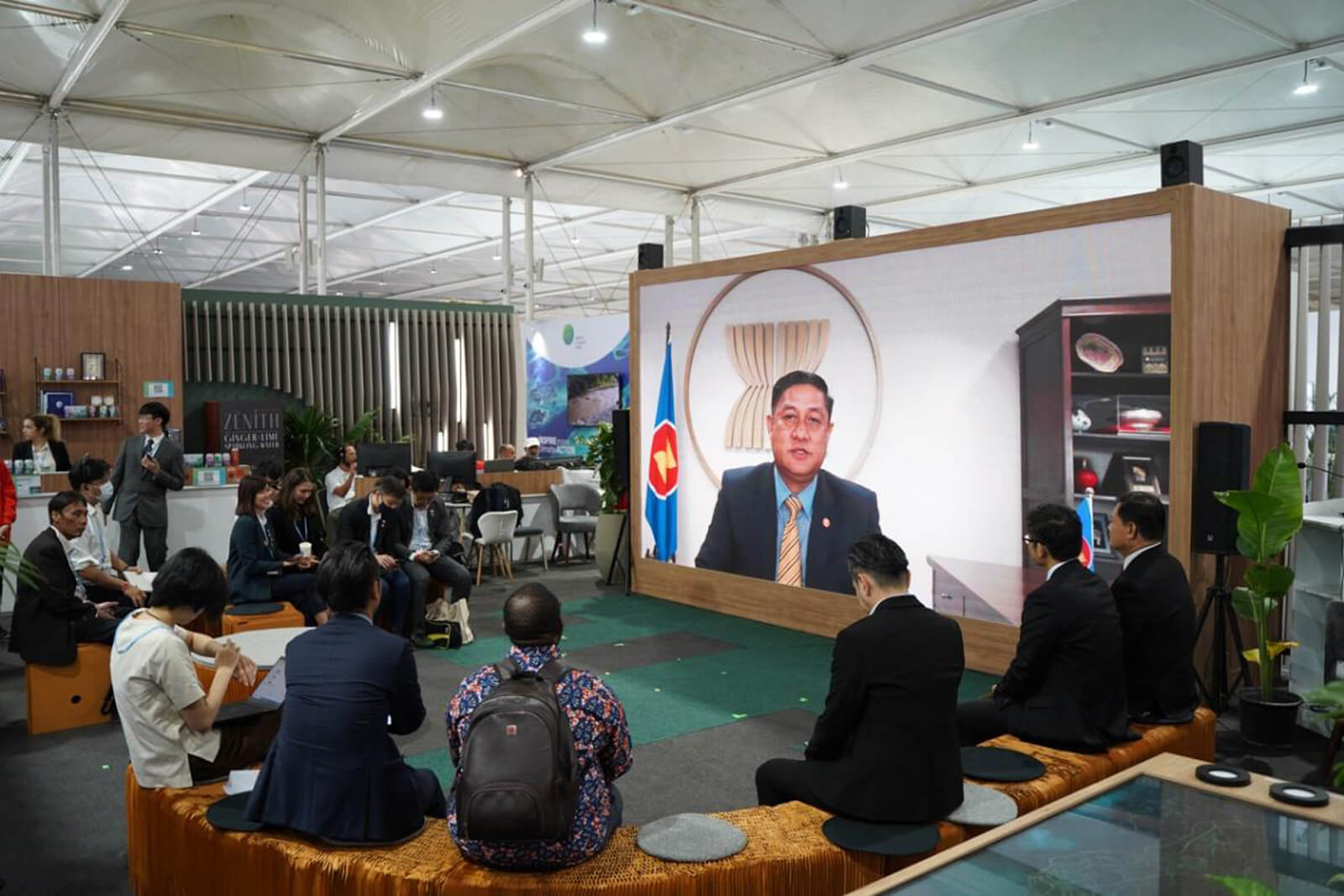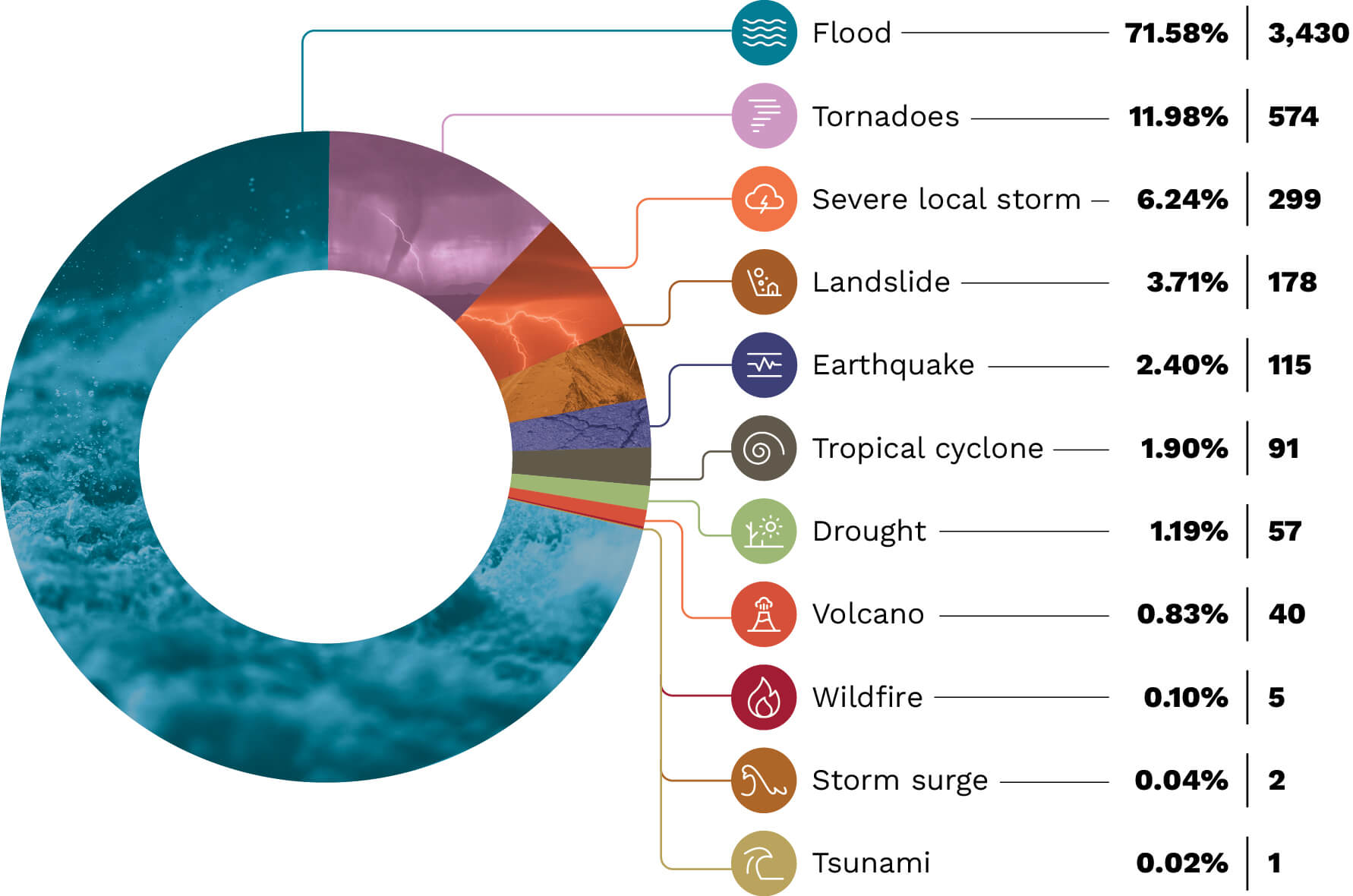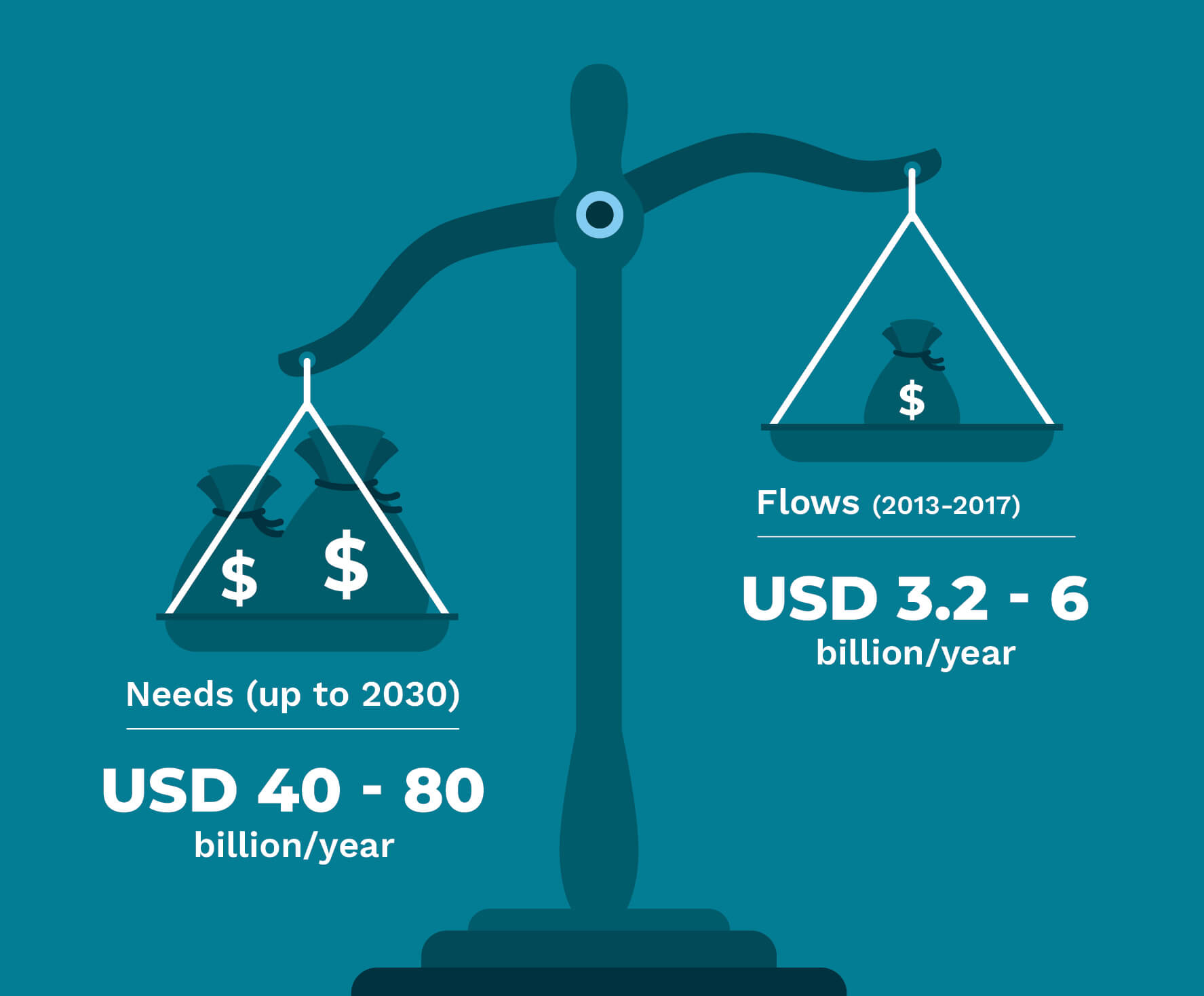






The concept of loss and damage was first raised in the 1991 climate change negotiations by Vanuatu as a facility to compensate small island developing states for the devastating impacts of sea-level rise. Subsequently, the term “loss and damage” has come to be understood as any negative consequences of climate change on economic, social and environmental systems.
This concept was further elaborated at the Conference of Parties (COP-13) in Bali, Indonesia, in 2007. The Bali Action Plan emphasised the need for enhanced action on adaptation, including disaster risk reduction strategies and means to address loss and damage. Moreover, the COP-18 in Doha in 2012 agreed to establish institutional arrangements to address loss and damage under the United Nations Framework Convention on Climate Change (UNFCCC). The following summarises the progress and evolution of loss and damage in COPs of UNFCCC from 2007 through 2022.
The most recent COP-27 in Egypt’s Sharm el-Sheikh reached a breakthrough agreement on the Loss and Damage Fund for vulnerable countries hit by climate change. The new pledge during the COP-27 was more than 230 million US dollars to help vulnerable communities through concrete adaptation solutions.
The COP-27 made two important decisions: Decisions 2/CP.27 and 2/CMA.4 established funding arrangements for responding to climate-induced loss and damage. These new funding arrangements will assist developing countries that are particularly vulnerable to the adverse effects of climate change. The assistance includes providing and mobilising new and additional resources to complement existing funding support.
ASEAN leadership in climate action
ASEAN is one of the most vulnerable regions to climate change according to the assessment of the Climate Risk Index 2021 and other research (Yusuf and Francisco, 2009). The disaster experiences recorded in the ASEAN Disaster Information Network (ADINet) are shown in Figure 1.
The discourse around loss and damage associated with climate change has become particularly pertinent for the ASEAN region. Research studies have indicated the significant cost of climate loss and damage in the region. The Climate Risk Index 2021 estimated that Myanmar, the Philippines, and Thailand had lost around 12.41 million US dollars in PPP (purchasing power parity) due to extreme weather events from 2000 to 2019. The region’s development ambitions risk being set back by the extensive losses due to climate impacts. Therefore, climate change is one of the region’s top priorities. The ASEAN Member States are all parties of the UNFCCC and the Paris Agreement and are fully committed to enhancing global climate action. Collectively, ASEAN has taken proactive steps to prioritise this key issue in many of its initiatives and action programmes, such as in the ASEAN Socio-Cultural Community (ASSC) Blueprint 2025, which outlines the key strategic measures toward a more climate-resilient region. ASEAN articulates these aspirations and commitments to the global community and the wider public through regular issuance of ASEAN Joint Statements on Climate Change to the Meetings of the Conference of Parties to the UNFCCC.
Climate change has become a strong and powerful issue for political action in each succeeding year of ASEAN Chairmanship, for example, the Special ASEAN Ministerial Meeting on Climate Action under Singapore’s ASEAN chairmanship in 2018, the establishment of the ASEAN Centre for Climate Change and the launch of the ASEAN Youth Climate Action during Brunei Darussalam’s ASEAN Chairmanship in 2021, and the promotion of community-based climate actions under 2023 ASEAN Chair Indonesia.

ASEAN in COP-27
As in previous COPs, the ASEAN Member States spoke at the UNFCCC COP-27 in 2022 with a unified voice and reaffirmed their commitment to addressing global climate challenges. The pledge is articulated in the ASEAN Joint Statement on Climate Change to the UNFCCC COP-27, delivered by Minister Say Samal of the Cambodian Ministry of Environment on behalf of ASEAN, and harmonised in Cambodia’s National Statement at the Resumed High-Level Segment of the COP-27. The statement highlights that the region must not lose sight of the urgent actions needed to address the climate crisis that already affects people’s lives in ASEAN with increasing losses and damages every year. The minister stated that the inclusion of financing for loss and damage in the COP-27 agenda was a welcome development and expressed hope that this will allow rapid progress in delivering financing assistance for the most affected countries.
Through this pronouncement, ASEAN has reaffirmed its commitment to achieving a sustainable climate toward a net-zero community. ASEAN also urged parties to the UNFCCC and Paris Agreement to revisit and strengthen the 2030 targets in their Nationally Determined Contributions (NDCs), step up their adaptation efforts, enhance access to climate finance, and advance an intergenerational approach to addressing climate change that is sensitive to the needs of vulnerable groups, women and all genders. Specifically, ASEAN called upon UNFCCC parties and developed country parties to:
- Fully engage in the Glasgow Dialogue to discuss the arrangements for the funding of activities to avert, minimise, and address loss and damage associated with the adverse impacts of climate change;
- Provide adequate and sustainable support to AMS to develop their plans related to adaptation and loss and damage and to consider the 2030 Agenda for Sustainable Development and the Sendai Framework for Disaster Risk Reduction 2015-2030.
Aside from formal negotiations, Member States, in coordination with the ASEAN Secretariat and partners, organised side events on the fringes of the official meetings. These events allowed participants to engage dynamically with Parties and other stakeholders for networking, capacity building, knowledge exchange, and the exploration of workable solutions for advancing climate action. Participants from all around the world were enthusiastic about the wide range of issues discussed at the ASEAN Member States’ Pavilion at the UNFCCC COP-27. The discussions included financing and investment for haze-free sustainable land management in ASEAN (Malaysia’s Pavilion), climate community-based action in Southeast Asia (Indonesia’s Pavilion), and Strengthening transparency efforts in Monitoring, Reporting, and Verification (MRV) of Greenhouse Gas (GHG) emissions in the ASEAN Region (Singapore’s Pavilion).
The ASEAN Climate Finance Strategy
To enhance and accelerate the flow of climate finance in the ASEAN region, ASEAN is jointly developing the ASEAN Climate Finance Strategy/Climate Finance Access and Mobilization Strategy for ASEAN Member States in collaboration with the UNFCCC Regional Collaboration Centre Bangkok. This strategy is being developed in accordance with Article 9 of the Paris Agreement to improve ASEAN access to climate finance and catalyse climate finance and investment for the implementation of priority mitigation and adaptation actions based on needs identified by the Member States.
The ASEAN Climate Finance Strategy includes strategic areas of collaborative action among countries ranging from capacity building to diversification and innovation, policy harmonisation, and transparency and integrity. It is expected to result in lower GHG emissions and increased climate resilience of the ASEAN community through the production of bankable national and regional climate change projects. The strategy, which is ahead of its time, will enhance support to address loss and damage resulting from the adverse effects of climate change in the region through the new loss and damage fund.
From the standpoint of international negotiations on loss and damage and its breakthrough funding mechanism, ASEAN must seize the opportunity to advance its efforts toward fostering climate-resilient sustainable development and comply with recent developments in international climate agenda. The imminent release of the ASEAN Climate Finance Strategy is anticipated to be the primary avenue through which the Member States and their partners can increase regional access to climate funds, including for addressing the concerns of loss and damage associated with the adverse effect of climate change.
Through a coordinated implementation of the strategy, ASEAN could increase its capacity and understanding in the discussion of loss and damage. This could be achieved by (i) improving knowledge and understanding of comprehensive risk management approaches to address loss and damage; (ii) fostering communication, coordination, coherence, and synergies among relevant stakeholders; and (iii) fostering action and support, including financial, technological, and capacitybuilding resources, in line with the Warsaw International Mechanism for Loss and Damage. The improved access to climate finance for ASEAN will then propel the region closer to meeting the countries’ climate goals and strengthening Southeast Asian communities’ resilience to climate change. ASEAN also continues to be dedicated to addressing issues pertaining to loss and damage from the harmful effects of climate change through (i) the creation of regional initiatives, such as policy dialogues and negotiation trainings related to loss and damage, and (ii) the preparation of the ASEAN Joint Statement on Climate Change to UNFCCC COP-28 under Indonesia’s ASEAN chairmanship, allowing ASEAN to engage in global discussions on loss and damage.

Prospects for ASEAN and Member States
In light of ongoing discussions on the establishment of the loss and damage financing mechanism for the timely and equitable distribution of funds to developing countries and ASEAN’s vulnerable communities, the following recommendations are proposed:
i. At the regional level, ASEAN must continue to engage
a. ASEAN may recommend to the UNFCCC Committee on loss and damage to develop clear guidelines for identifying and quantifying loss and damage for local, cities, sector and national level.
b. ASEAN may recommend to the UNFCCC Committee of the loss and damage to consider diversifying and decentralising the loss and damage mechanisms to local and regional organisations such as ASEAN to promptly respond to emergencies and loss and damage priorities in the region (e.g. ASEAN loss and damage funds).
c. ASEAN shall develop manuals and tools for identifying and quantifying loss and damage, and prioritisation of regional and national assessment of vulnerability and loss and damage, as well as development of a database and capacities of relevant stakeholders on loss and damage.
ii. Individual nation states must be prepared
a. They must join the discussion on the establishment of loss and damage fund disbursement mechanisms to enable affected communities access the loss and damage fund and noneconomic support measures.
b. They must build the capacity of relevant agencies, local governments, cities and communities to identify, quantify, report, and communicate information on loss and damage at each respective scale for consolidation at the national level, and for loss-damage support (both market and nonmarket support).
c. They must design and establish a suitable platform for engagement and coordination of stakeholders for the exchange of knowledge, data and information on loss and damage.






